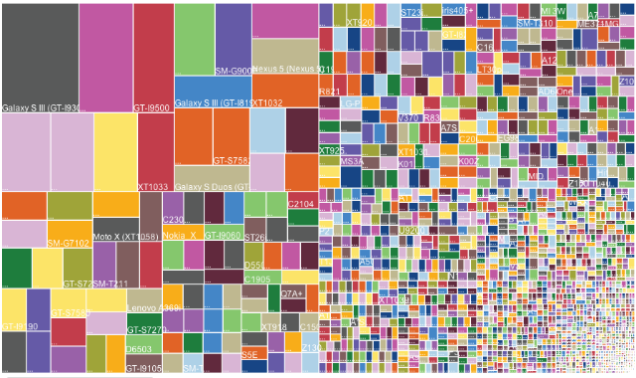@musicalmac
The source of the issue isn't as important as the fact that the issue exists and will continue to exist. What percentage of android phone users do you think employ Cyanogenmod on their device?
Actually, the source of fragmentation is very important. Only when the problem at the source is addressed, will the problem be fixed. My referencing to Cyanogenmod was an example that shows later versions of Google's Android can run on a device that was only supported by the manufacturer up to Android 2.3. I was not referencing that example for the purpose of describing a solution for users.
If you're actually curious about the number of Cyanogenmod users, at the end of 2013 there was a little over 10 million. Since that time, the CM team has expanded device support, and have launched as the stock OS on two devices, the OPPO N1, and the OnePlus One.
I find that statistic curious, because it would be more meaningful indicate what percentage of android phone users can utilize all the apps on the Google Play store, not just the ones who can see that those apps exist.
Also, neither the Nexus nor android one program have had a meaningful impact on fragmentation yet, except to add to it. It's always coming, every fix is always coming... It's an old record spun way too many times. It's like the boy who cried wolf. One day, they may actually get their stuff together, but it may be too late.
Having the latest version of Google Play Services, means a device and its apps (Android 2.3 or later) can have access to Google's latest API's.
Android One program hasn't launched yet. The Nexus program has also been growing year over year. Due to that success, a number of OEM's have been using stock or close to stock Android in their more recent devices. Thanks to the popularity of the Nexus program, there was also the introduction of Google Play editions of flagship devices.
Couple things --
- Looking at flagship android phones is fine but it's my guess that the majority of android phones out in the hands of end users today are probably not flagship-level phones. If they were, the iPhone wouldn't be trouncing everyone so entirely. The iPhone 5s sold more in a month than the Galaxy S5 has managed in the phone's entire lifetime. If android flagship phones were the prime reason for fragmentation, we wouldn't have the hundreds and hundreds of unique flavors that we can clearly see do exist.
- The other thing I want to mention is the same as the last thing -- it just hasn't happened yet. android L is not yet here, it has not yet unified the android universe, and I don't know if it can or not. I think you're right that fragmentation woes will only get worse as time goes on, and android will further solidify its place in history as the feature phone replacement OS.
Maybe it'll all change with android L, but I have to say, I've seen wolf cried a whole lot over the course of android's development. Welp, that wolf coming for Apple still hasn't arrived, and Apple's house isn't made of straw anymore.
But I wouldn't mind a surprise, it's been a long, long, long time...
Considering many apps and features are designed with flagship devices in mind, the hardware inside flagship devices is a key point in all of this.
My reference to Android L was regarding the support for upcoming architectures in the mobile industry.
Again, the problem falls to the manufacturers (and in some cases the carriers) that do not update a device to the latest version of Android.
Speaking of crying wolf, we've been hearing about Android's growing fragmentation for years. Yet here we are in 2014, and we still haven't seen large scale doom and gloom that's generally spelled out via negative predictions from annual fragmentation reports.


Log in to comment